This document discusses data reduction techniques for improving bug triage in software projects. It proposes combining instance selection and feature selection to simultaneously reduce the scale of bug data on both the bug dimension and word dimension, while also improving the accuracy of bug triage. Historical bug data is used to build a predictive model to determine the optimal order of applying instance selection and feature selection for a new bug data set. The techniques are empirically evaluated on 600,000 bug reports from the Eclipse and Mozilla open source projects, showing the approach can effectively reduce data scale and improve triage accuracy.


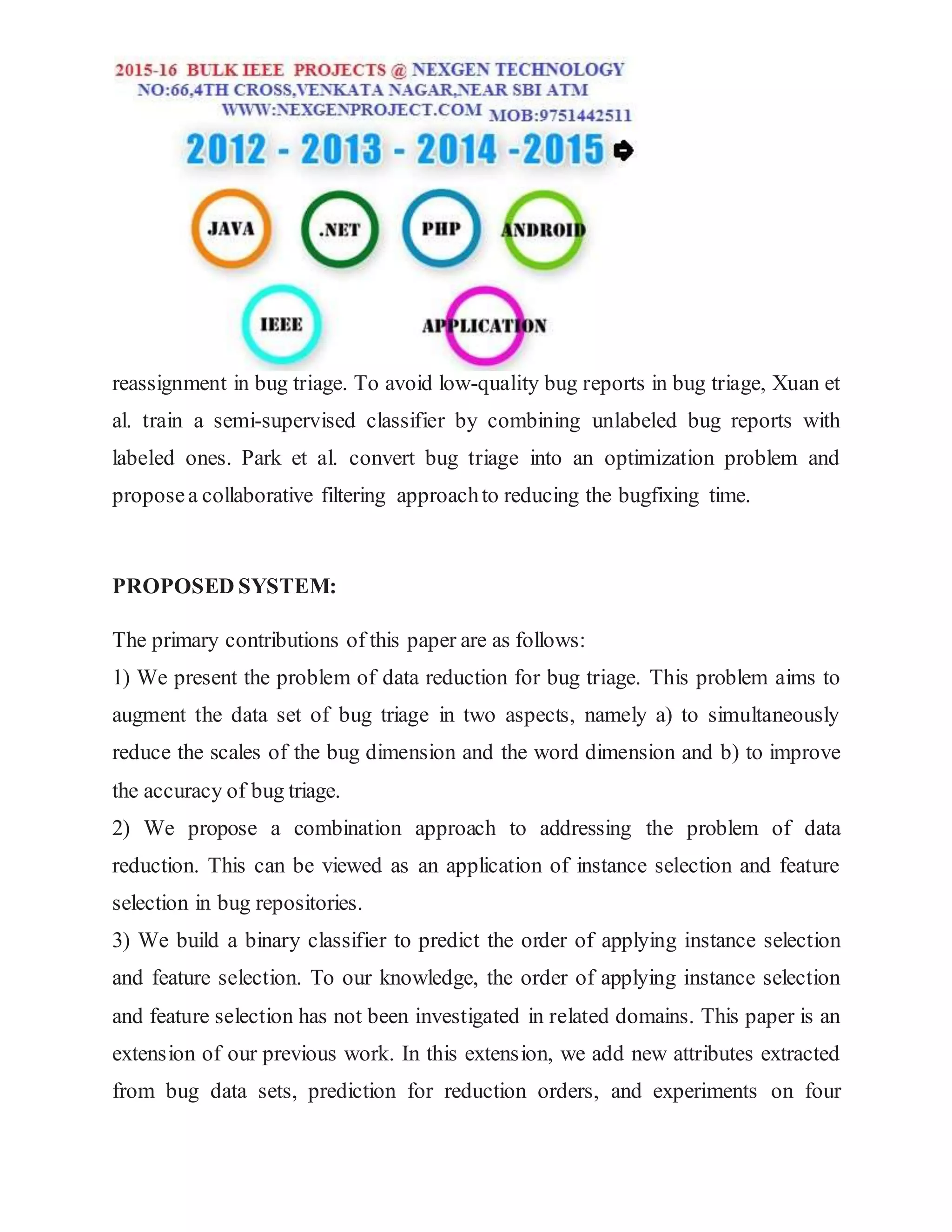
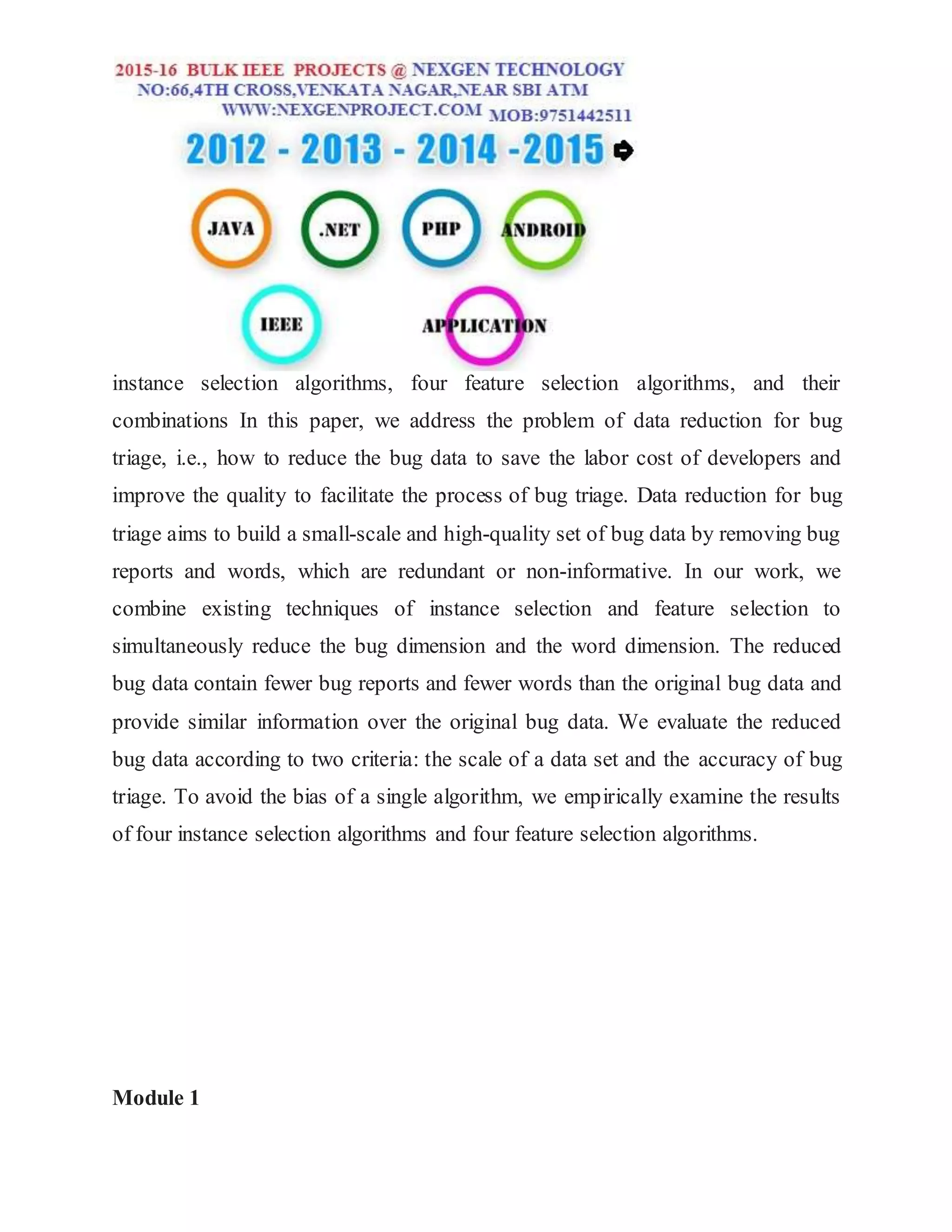
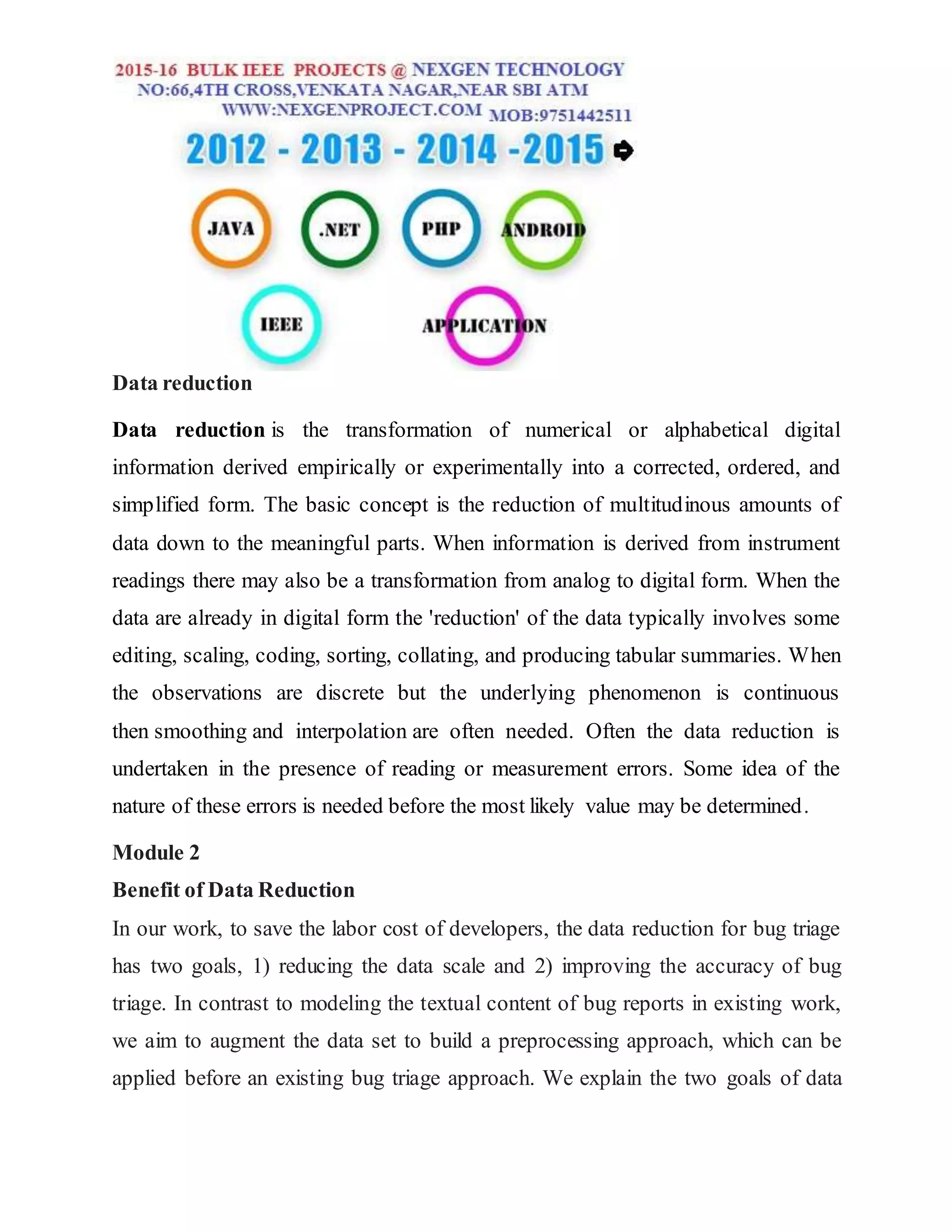
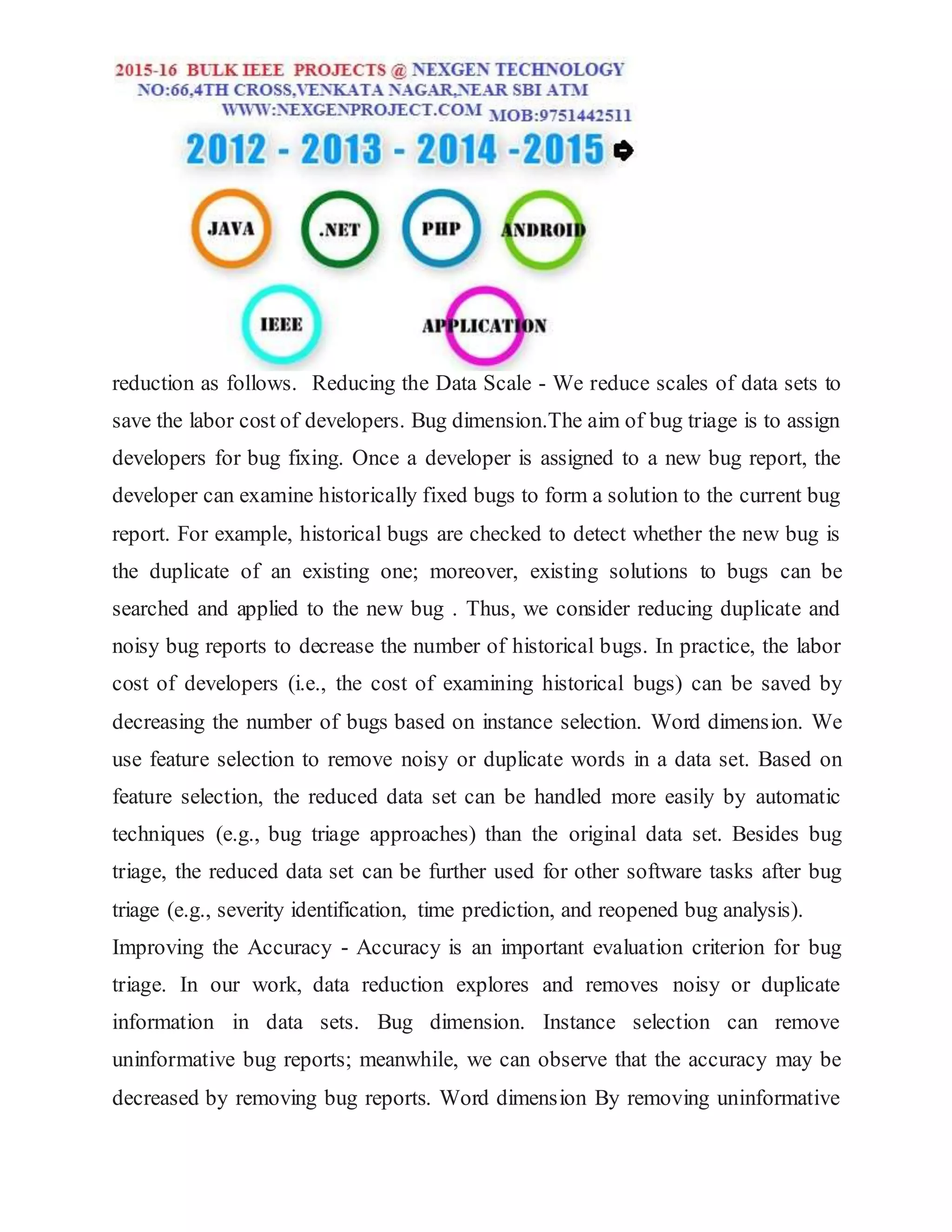
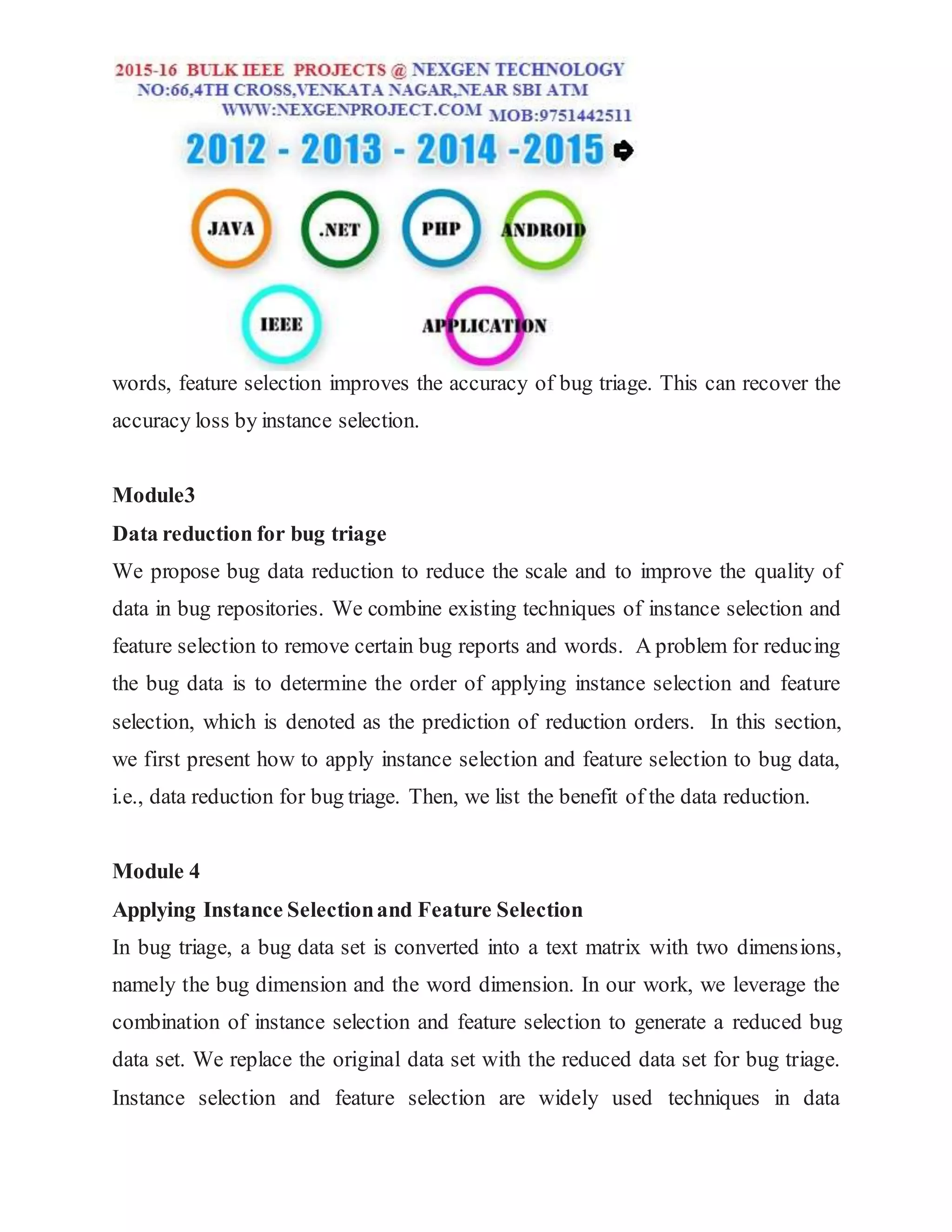
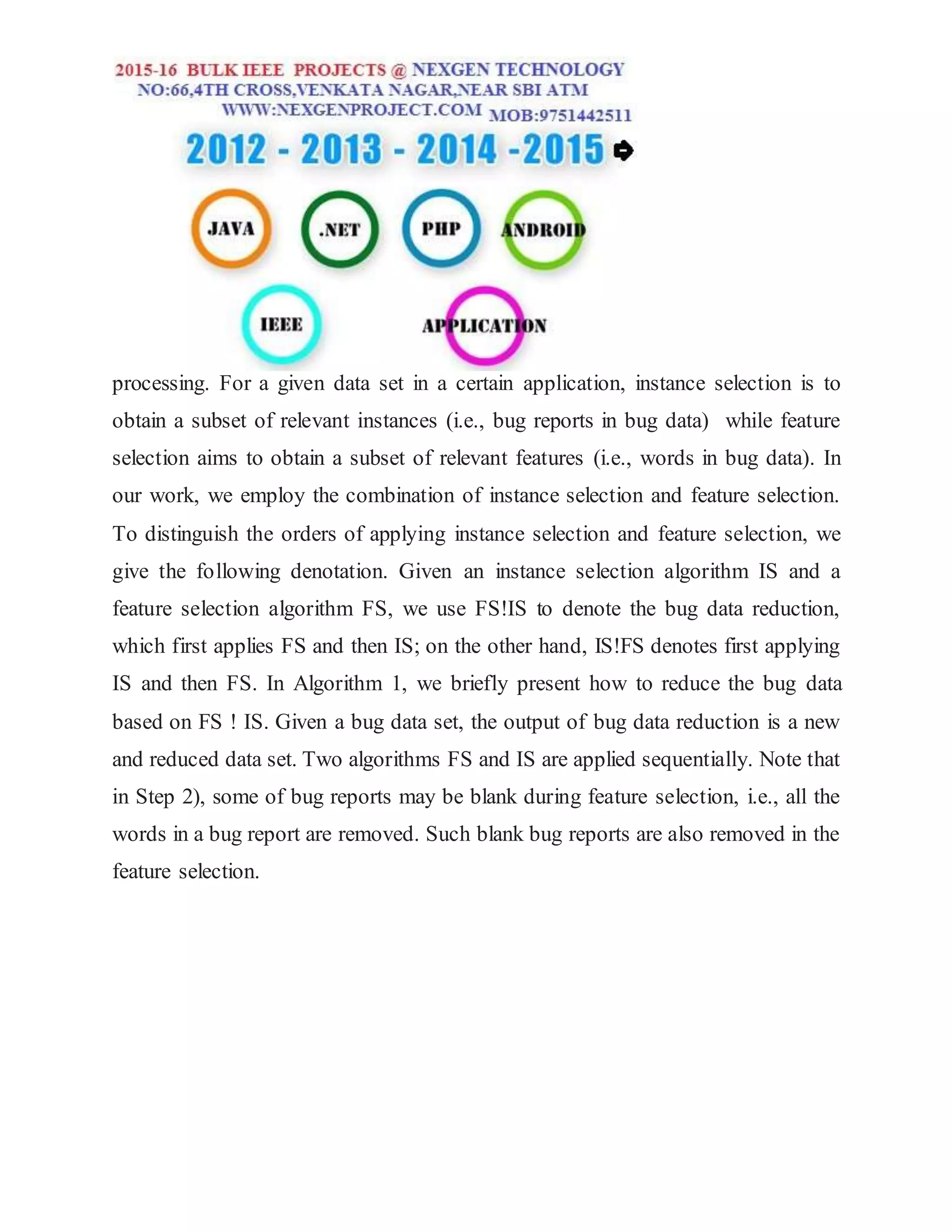
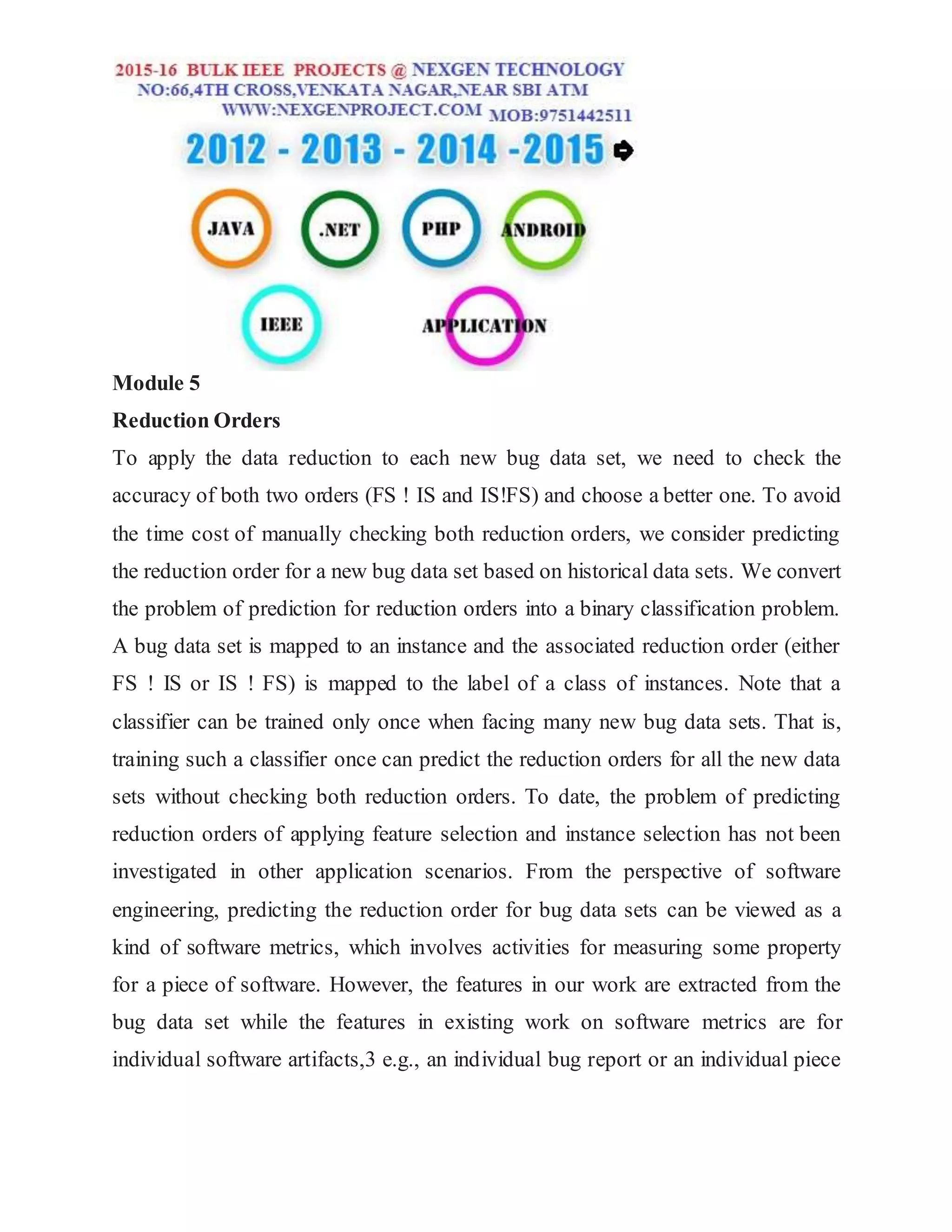
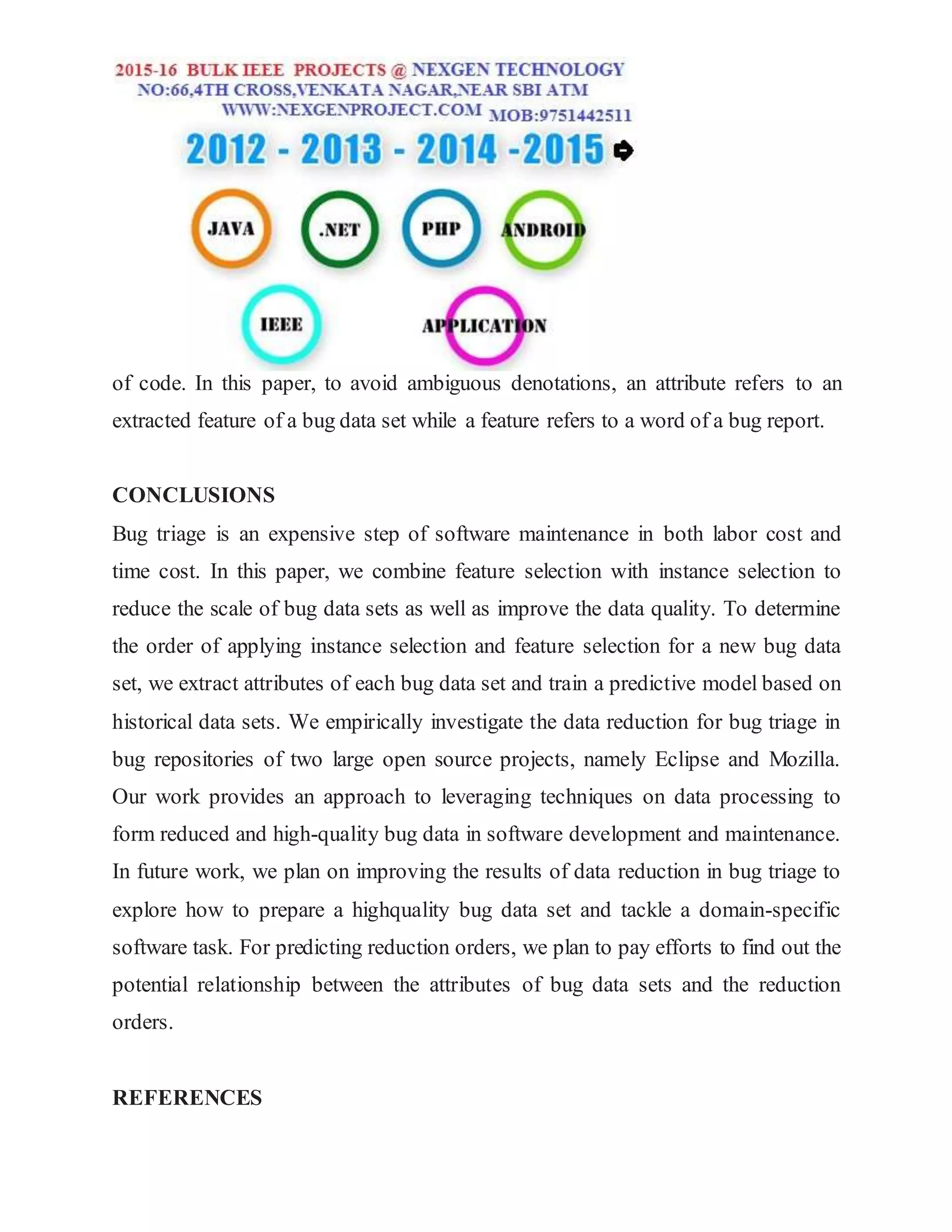
![[1] J. Anvik, L. Hiew, and G. C. Murphy, “Who should fix this bug?” in Proc. 28th
Int. Conf. Softw. Eng., May 2006, pp. 361–370.
[2] S. Artzi, A. Kie_zun, J. Dolby, F. Tip, D. Dig, A. Paradkar, and M. D. Ernst,
“Finding bugs in web applications using dynamic test generation and explicit-state
model checking,” IEEE Softw., vol. 36, no. 4, pp. 474–494, Jul./Aug. 2010.
[3] J. Anvik and G. C. Murphy, “Reducing the effort of bug report triage:
Recommenders for development-oriented decisions,” ACM Trans. Soft. Eng.
Methodol., vol. 20, no. 3, article 10, Aug. 2011.
[4] C. C. Aggarwal and P. Zhao, “Towards graphical models for text processing,”
Knowl. Inform. Syst., vol. 36, no. 1, pp. 1–21, 2013.
[5] Bugzilla, (2014). [Online]. Avaialble: http://bugzilla.org/
[6] K. Balog, L. Azzopardi, and M. de Rijke, “Formal models for expert finding in
enterprise corpora,” in Proc. 29th Annu. Int. ACM SIGIR Conf. Res. Develop.
Inform. Retrieval, Aug. 2006, pp. 43–50.
[7] P. S. Bishnu and V. Bhattacherjee, “Software fault prediction using quad tree-
based k-means clustering algorithm,” IEEE Trans. Knowl. Data Eng., vol. 24, no.
6, pp. 1146–1150, Jun. 2012.
[8] H. Brighton and C. Mellish, “Advances in instance selection for instance-based
learning algorithms,” Data Mining Knowl. Discovery, vol. 6, no. 2, pp. 153–172,
Apr. 2002.](https://image.slidesharecdn.com/towardseffectivebugtriagewithsoftware-150516114645-lva1-app6892/75/Towards-effective-bug-triage-with-software-11-2048.jpg)
![[9] S. Breu, R. Premraj, J. Sillito, and T. Zimmermann, “Information needs in bug
reports: Improving cooperation between developers and users,” in Proc. ACM
Conf. Comput. Supported Cooperative Work, Feb. 2010, pp. 301–310.
[10] V. Bol_on-Canedo, N. S_anchez-Maro~no, and A. Alonso-Betanzos, “A
review of feature selection methods on synthetic data,” Knowl. Inform. Syst., vol.
34, no. 3, pp. 483–519, 2013.
[11] V. Cerver_on and F. J. Ferri, “Another move toward the minimum consistent
subset: A tabu search approach to the condensed nearest neighbor rule,” IEEE
Trans. Syst., Man, Cybern., Part B, Cybern., vol. 31, no. 3, pp. 408–413, Jun. 2001.](https://image.slidesharecdn.com/towardseffectivebugtriagewithsoftware-150516114645-lva1-app6892/75/Towards-effective-bug-triage-with-software-12-2048.jpg)